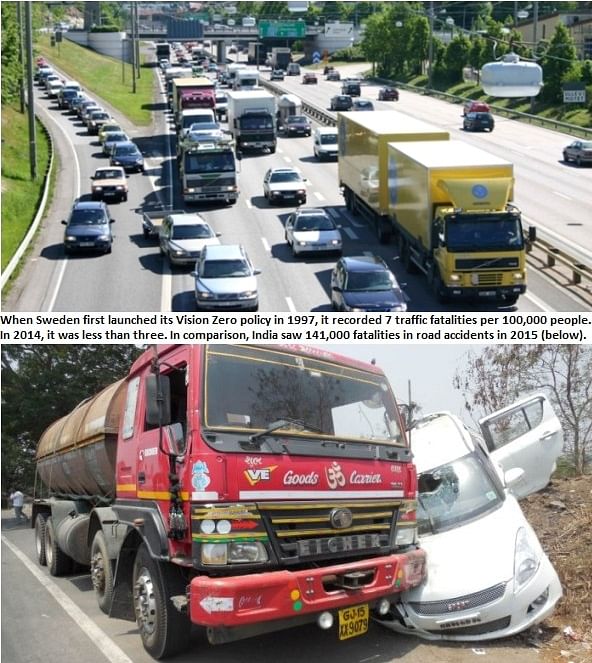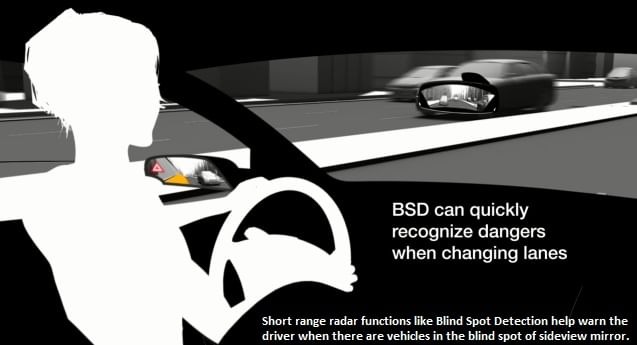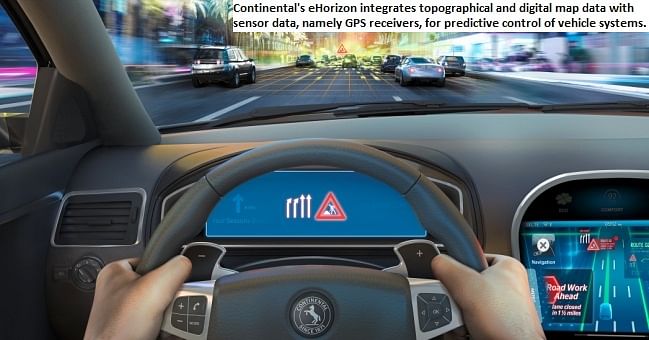Driving towards Vision Zero
Every six seconds, somewhere in the world, someone is killed or injured in a road accident. While the statistics are improving rapidly in developed nations, those from the developing world are alarming.
In the course of a lifetime, a driver in an industrialised nation spends an average of 23,000 hours or 2.5 years behind the wheel. It is, therefore, not surprising that driving is an emotional experience for many. Individual mobility, often an expression of personal freedom in developing countries, is fuelling a rapid increase in road traffic volumes, and consequently in road accidents.
Every six seconds, somewhere in the world, someone is killed or injured in a road accident. While the statistics are improving rapidly in developed nations, those from the developing world are alarming. The World Health Organization (WHO) reports that 91 percent of the world’s road fatalities occur in low and middle-income countries, home to approximately half of the world’s vehicles. India sits squarely in the middle of this group.
Reckless driving, overspeeding, driving through red lights and un-signaled lane changes – poor driving behaviour is common on our roads. This is made worse by the heterogeneous nature of traffic, vehicles of varying sizes and speeds, jostling for space alongside pedestrians, non-motorised vehicles and even animals. With the third largest road network in the world, India still has much ground to cover when it comes to road infrastructure. Regulators, urban planners and the automotive industry are collectively faced with the enormous challenge of making our roads safer for both cars and pedestrians.

Learning from the leaders
When Sweden first launched its Vision Zero policy in 1997, it recorded seven traffic fatalities per 100,000 people. In 2014, that number was fewer than three. Compare that with an average of 19.5 fatalities on India roads per 100,000 inhabitants every year.
Accidents are often a consequence of the driver’s inability to react in time. Sweden’s radical vision to road safety is not so much rocket science as sound urban planning which can compensate to a great extent for human error. Low speed-limits, pedestrian zones and separators that isolate cars from motorbikes, clearly demarcated overtaking lanes, 12,600 safe crossings such as pedestrian bridges and zebra-crossings, warning lights and well-designed speed-bumps have halved pedestrian deaths in Sweden. Strict enforcement and education for a period of 20 years have played an equally critical role.
In an attempt to make highways safer in India, the Ministry of Road Transport & Highways made anti-lock braking system or ABS mandatory for all new commercial vehicles from 2014. A recent draft notification from the Indian road transport ministry mandates that new two-wheelers with engine capacity exceeding 125cc manufactured on and after the April 1, 2017 be fitted with anti-lock braking system and all existing two-wheelers exceeding 125cc manufactured on and after April 1, 2018 be fitted with anti-lock braking system. A similar legislation for passenger vehicles is hopefully not too far away.
Collaborating to realise Vision Zero
The WHO suggests some fundamental changes to reduce road traffic injuries in developing countries; designing safer infrastructure for example, and incorporating road safety features into land-use and transport planning, improving the safety features of vehicles, and improving post-crash care for victims of road accidents. Interventions that target road user behaviour are equally important, such as formulating and enforcing laws relating to key risk factors, and raising public awareness. Cooperation between the major stakeholders will pave the way for implementation of these changes.
The ‘Decade of Action for Road Safety 2011 – 2020’ is United Nations’ effort to save five million lives by 2020 by preventing crashes in low income countries, where 90 percent of all road accidents occur.

Global NCAP, an independent organisation focused on vehicle safety, is now concentrating on rapidly motorising countries in Asia (including India) and Latin America. ‘Stop the Crash’, a campaign launched by Global NCAP, brings together non-government foundations, research organisations and global automotive players to bring the zero accidents goal closer to fruition. Continental and other leading automotive suppliers have joined the campaign in order to make a concerted effort in this direction.
In Europe, for example, the UR:BAN (Urban Space: User oriented assistance systems and network management) research project brought together 31 partners from automobile and supplier industries, electronics and communications, software, research, policymakers and academia to develop driver assistance and traffic management for urban areas.
The promise of technology
In developed countries easing the load on the driver is a crucial factor. Advanced driver assistance systems like electronic stability control, automatic emergency braking systems, lane departure warning as well as augmented reality head up displays, eHorizon and other networked safety functions have made a marked difference in Europe, US and Japan.

In countries like India, where automated driving won’t be part of everyday driving for many years to come, the implementation of a fast forward, comprehensive road safety program that impacts and involves all road users is the need of the hour. For example, the priority should be to protect car occupants to the same extent as pedestrians, cyclists or motorcyclists. The main concern is to reduce the impact in accidents and thereby mitigate the consequences. In the future, assisted driving, and much later automated driving will ensure the car automatically complies with internationally harmonised regulations. The technique or temperament of the driver will cease to matter, unlike today.
By 2025, over 250 million connected vehicles will be on the roads of our planet. The new generation of car drivers, for whom, networking is natural and omnipresent will find a driver workplace centered purely on the driving task unacceptable. The communication and entertainment industries will come together to deploy holistic HMI solutions that support modern communication habits, without compromising on safety.
Standardised systems for Vehicle-to-X communication will allow vehicles to communicate with each other and exchange data with the infrastructure, opening up a wide field for new functions while at the same time, making driving safer and more comfortable. There are enormous economic and social possibilities opening up through digitalisation.
A basic tenet of Vision Zero is that safety be a universal right, rather than the privilege of a few. Companies are making safety technologies cost effective, so vital safety systems are no longer limited to the premium models.
While India contends for a spot amongst the global top three producers of passenger cars, we must simultaneously commit to better planning, policy implementation and technology adoption to accelerate our progress towards a future increasingly free from road fatalities.
This exclusive column was published in Autocar Professional's 11th Annversary Issue (December 15-2015)
RELATED ARTICLES
Indian Automotive Dealerships Focus on Data-Driven Strategies to Navigate Market Challenges
Industry executives outline four key approaches including technology adoption, inventory management, geographic expansio...
Skateboard EVs and Conversion Architectures: Navigating India’s Electrified Future with Flexible Platforms
Industry experts advocate for adaptable platform strategies combining ICE conversions and skateboard designs to meet div...
Agentic AI Systems: Building Autonomous Solutions
Advanced artificial intelligence agents show capacity for adaptive responses in vehicles, aerospace, and infrastructure ...





 14 Feb 2016
14 Feb 2016
 8887 Views
8887 Views





 Angitha Suresh
Angitha Suresh




